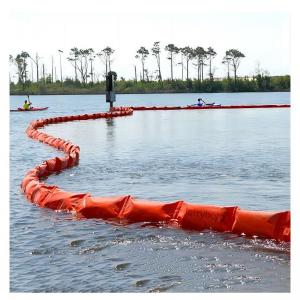

Add to Cart
Product Introduction
JRB Floating Oil Boom |
Floating oil booms are a crucial tool in mitigating the
environmental damage caused by oil spills. They serve as a first
line of defense by containing the spilled oil, allowing for easier
recovery and cleanup operations. Oil spill response teams,
government agencies, and the oil industry often have these booms
readily available and use them as part of their contingency plans
to protect coastlines, aquatic ecosystems, and sensitive habitats
from the adverse effects of oil contamination.
Advantages of Floating Oil Boom
1. Design: Floating oil booms typically consist of a series of connected,
cylindrical or rectangular flotation devices made from materials
like foam, plastic, or inflatable chambers. These flotation devices
provide buoyancy, allowing the boom to float on the water's
surface.
2. Barrier Function: The primary function of a floating oil boom is to create a
barrier that prevents the spread of spilled oil across water
bodies. It works by trapping the oil within the containment area
defined by the boom, which can be in the form of a U-shape, a
fence-like structure, or a curtain that hangs below the water's
surface.
3. Configurations: Floating oil booms come in different configurations, including:
* Permanent booms: These are designed for long-term installations around sensitive
areas like marinas, ports, or industrial facilities.
* Curtain booms: These are curtains that hang vertically from the water's surface
and are often used to protect shorelines and sensitive habitats.
* Inflatable booms: Some booms have inflatable chambers, which can be rapidly
deployed and inflated to create a barrier.
* Sorbent booms: These booms have absorbent materials attached to them to capture
and contain oil, making cleanup more efficient.
4. Deployment: Oil booms are typically stored in compact containers or reels and
can be quickly deployed in the event of an oil spill. They can be
towed behind boats or positioned using anchors to encircle and
contain the spilled oil.
5. Maintenance: Regular maintenance and inspection are necessary to ensure that
oil booms remain effective. They should be cleaned, repaired, and
replaced as needed to prevent oil from leaking through damaged or
deteriorating components.
6. Environmental Considerations: While oil booms are essential for containing spills, they can
also have environmental impacts, such as the entrapment of marine
life. Proper handling and mitigation measures are necessary to
minimize these impacts.
Specification
Company Profile
